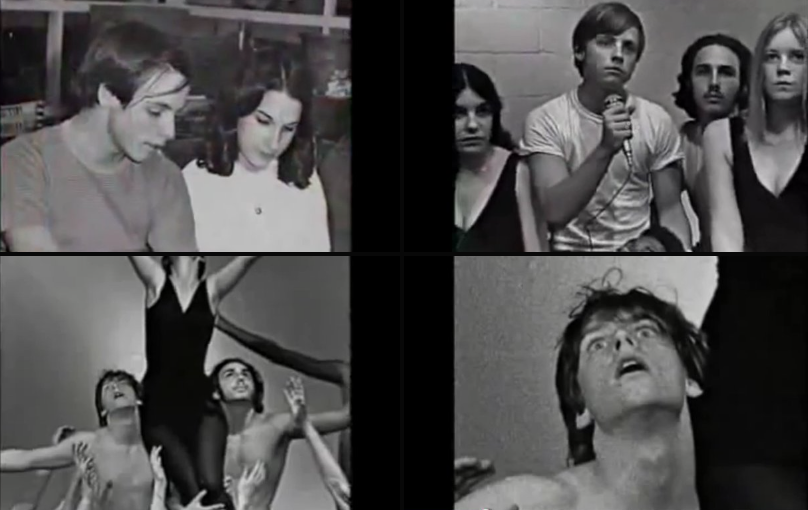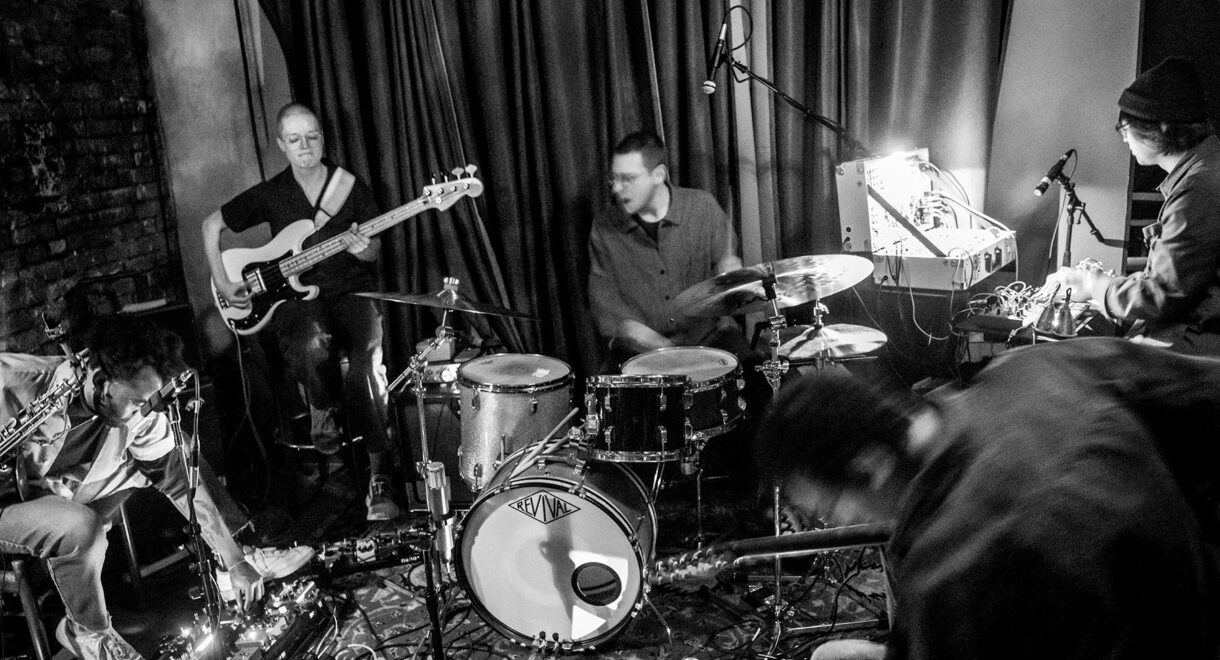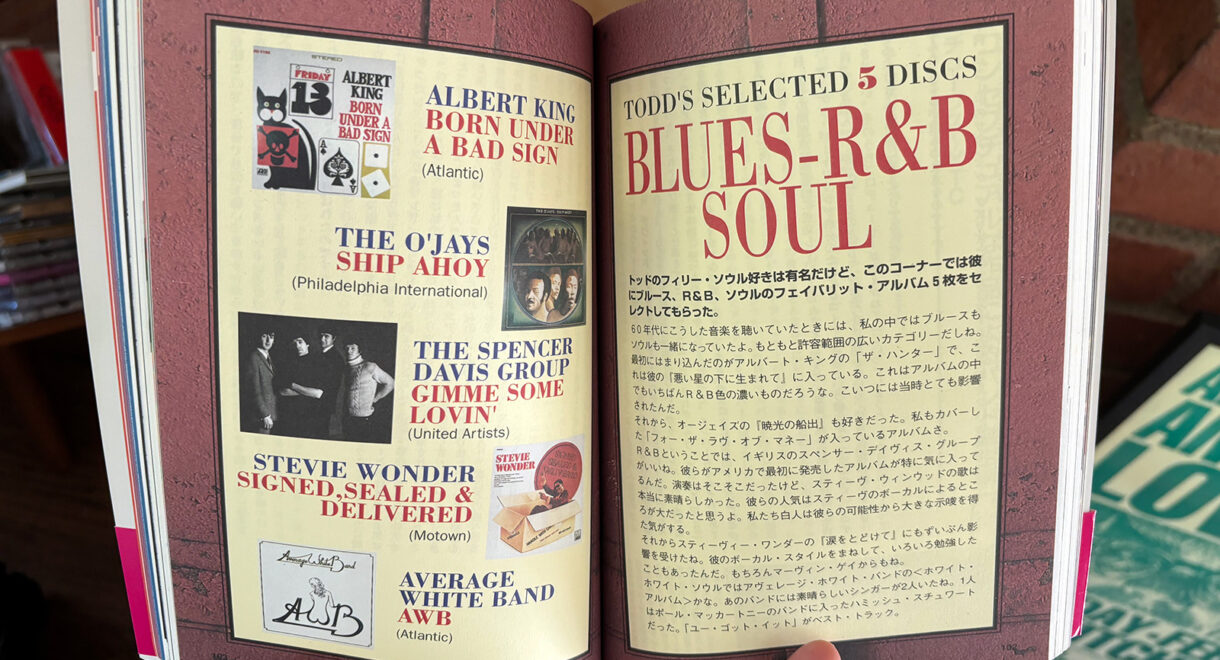In conversation with Small Medium Large, a new quintet from the burgeoning new West Coast jazz & improvised music scene. In 2018, LA-based jazz and post-rock guitarist Jeff […]
The Art of Tea: A Michael Franks Retrospective (1975-1985)

A deep dive on our favorite dollar bin jazz man, aka the professor of cool, and a selection of essential songs from his decades-spanning career.
When you’re in the bins you’ll undoubtedly come across this unassuming mustachioed white guy. There’s usually a hefty stack of his records, most likely delegated to the dollar bin or a loveable sore thumb in the jazz section. And if you haven’t already come across his silky smooth warble, you might think: “How did this guy who looks like a high school English teacher score a record deal?” Or: “He makes jazz music??”
You wouldn’t be that wrong. Before the start of his 50-year career in music, Franks taught contemporary literature at UCLA. The scholar spent the first quarter of his life studying the poetry of Roethke and never sought a musical education — other than the six free lessons that were included with the $29.95 Japanese Marco Polo guitar he bought when he was 14. But it was during his rigorous collegiate schooling that he found jazz, bossanova, and the sounds of the West Coast “cool jazz” movement. He discovered artists including Antonio Carlos Jobim, João Gilberto, Dave Brubeck, Mose Allison, and Miles Davis, all of whom would soon become his idols.
Once he landed a teaching position at the university and learned the scales of his jazz greats, Franks began writing his own material. The first was an anti-war musical entitled Anthems in E-flat that starred a pre-Star Wars Mark Hamill.

During this time, Franks also began composing film soundtracks — 1974’s Cockfighter and Zandy’s Bride — before finally leaping into solo material. The first, his eponymous debut on Brut Records followed by the 1976 breakout The Art of Tea, which solidified a long recording future with Warner Brothers Records ahead.
His music took cues from the sophisticated jazz arrangements of Tom Jobim (bossanova is a significant influence on his approach to guitar) and eased his ultra-smooth voice into the equation to help pioneer the “quiet storm” movement. Named after Smokey Robinson’s 1975 album, “Quiet Storm” was a 70s subgenre that was initially a radio program at Washington D.C.’s WHUR-FM. Celebrated DJ Melvin Lindsey curated the program with a “new sound” consisting of contemporary R&B, performed in a smooth, romantic, jazz-influenced style and Franks was a leader of that movement. While sticking to that unique brand of pop-jazz, Franks also adapted with the times. While still holding onto his roots, he grew into the 80s and began incorporating synthesizers and dancier production, landing somewhere in an uptempo jazz meets synth-pop world that could even be mistaken for Japanese city pop.
Franks penned the liner notes to a reissued retrospective a few years back, reflecting on his many years in music that perfectly sums him up as an artist, a person, and his loveable jazz-dad spirit. Here are some snippets:
“As I review the songs included in this collection, most of which derive from my 24 years at Warner Bros., I am reminded of and impressed by all the wonderful musicians with whom I’ve had the pleasure of recording.
The compositions in this anthology reveal, I think, my consistent musical influences over the years: Jobim, jazz standards, R&B, the Great American Songbook. They also contain references to my life-long interests in art and literature. What you find in this music is an elaborate thumbnail sketch of my life’s work.
My songs are almost always autobiographical in the sense that they usually begin with a personal experience or observation. They often express, very literally, my own personal emotions. I’ve performed them on every continent except Antarctica, and I never cease to be amazed by how they connect me with my fans around the world, joining us together like beads in a ‘string of pearls,’ an expression my guru’s used.
If I had to summarize how I feel about my career at this point in time, I would say ‘gratitude’ is the first word that comes to mind. I’m grateful for my life experiences, both the good and the painful. I’m grateful to have found my guru, Yogananda, and a path that sustains me. I’m grateful to be married all these 35 years, to be a vegetarian, to live in the woods surrounded by the natural world I so deeply appreciate. I’m grateful to all the musicians, arrangers, producers, and engineers who have collaborated with me on this musical journey. Although I am a reclusive person by nature, I’ve always loved the company of musicians and always enjoyed “the hang.” I count most of them as my life-long friends. I miss the ones who have passed but am deeply grateful that their music lives.”
He concludes, “Music propels me toward the future. In a wonderful and miraculous way, it’s always whispering to me and circulating inside my head. I suppose, in that sense, I’m always writing.”
God we love him. Here are some of our highlights from our favorite teacher, the professor of cool, an ISC hero: Michael Franks.
The Art of Tea (1973)
The quintessential dinner soundtrack, The Art of Tea encapsulates the best of Michael Franks. With an elite group of jazz side-men, he explores a range of styles, jumping from slow-funk (“Monkey See, Monkey Do”), swing (“Jive” and the minor hit “Popsicle Toes”) ridiculous humor (“Eggplant”), and touching jazz-pop ballads like “I Don’t Know Why I’m So Happy I’m Sad.” Taking the Steely Dan approach, Franks roots the music with insanely lush 70’s production that would eventually earn Walter Becker’s seal of approval. Romantic, intelligent, and full of winking symbolism, the whole record is steeped with sophistication and an infectious, relaxing nature that suggests a kettle of finely brewed tea.
Franks recalls the album, saying: “My first project at Warner Bros., The Art of Tea, in which I found myself surrounded by Joe Sample, Wilton Felder, Larry Carlton, and my late friend, John Guerin, was a most auspicious beginning. Though I had released a self-titled album two years earlier, which also included an impressive list of sidemen, The Art of Tea sessions really helped to crystallize my sound.”
Sleeping Gypsy (1977)
Franks’ Art of Tea follow-up is just as strong. Sleeping Gypsy reigns in more of his Jobim and classic Brazilian influences and reimaginess it to appeal to wider audiences. Our favorite on here is “B’wana-He No Home.” It’s a song that could fit snugly in the prime Steely Dan catalog, so much so that it’s a clear influence on the Dan, who lyrically reversed the same themes here on their 1980 track “Gaucho.”
Burchfield Nines (1978)
1978’s Burchfield also features a rich jazz backing group, highlighting elite players including Bud Shank on sax and Steve Gadd on Drums. The record’s also filled with some hidden Balearic gems like the title track and the lush opening song “When The Cookie Jar Is Empty.”
One Bad Habit (1980)
Franks’ sixth release maintains his essential smooth sound, employing his typically clever writing and silky melodies while leaning into more pop-oriented territory. Our favorites here are the soothing lullaby “Lotus Blossom,” the longing jam “On My Way Home To You,” and the easygoing funk “Loving You More and More.”
Passionfruit (1983)
Considered the quintessential “Quiet Storm” album, 1983’s Passionfruit finds Franks at his most Gilberto-esque, continuing to incorporate his love for bossa and beginning to experiment with more intricate ‘80s dance arrangements. Our favorite is the breezy sax bop “When Sly Calls.” The song tells the tale of a bad news dude named Sly whose calls you should actively avoid answering. When Sly rings, “don’t touch that phone.” It features kooky dial tones and percussion breaks, recorded voicemails, and the great Randy Brecker on flugelhorn imitating a yacht rock Stan Getz.
Skin Dive (1985)
Skin Dive is Franks’ first significant departure from his “crystallized sound” and a precursor to his more synth-driven 80s releases that would follow. It featured powerhouse guests including Brenda Russell on backing vocal duties, Walter Becker on guitar, David Sanborn on sax, Ron Carter and Mark Egan of Pet Methany Group on bass, and even (weirdly) NY experimentalist Peter Gordon on french horn. Highlights include the ultra Steely “Your Secret’s Safe with Me,” the Brenda Russell duet “When I Give My Love to You,” and the almost city pop hit “Let Me Count the Ways.” Side note: The back cover features some pretty funny photos of Franks snorkeling and sporting a Speedo.










